The Essence of Yoga
Vol. 6 of the Series: Yoga: The Science of the Soul
Osho outlines how Yoga, when followed without austere practices and suppressed attitudes, can help people to become more natural and flowing, making it easier to move into meditation. Referring to the Yoga Sutras of Patanjali, a logician, mystic and poet living in 400 AD, he introduces a form of Yoga evolved from ancient traditions that is of continuing relevance to contemporary life.
Osho outlines how Yoga, when followed without austere practices and suppressed attitudes, can help people to become more natural and flowing, making it easier to move into meditation. Referring to the Yoga Sutras of Patanjali, a logician, mystic and poet living in 400 AD, he introduces a form of Yoga evolved from ancient traditions that is of continuing relevance to contemporary life.
“The body needs togetherness. Your innermost soul needs aloneness. That is the problem. Your innermost soul can remain alone – it is a Himalayan peak standing alone against the sky. Your innermost soul grows when it is alone, but your body needs relatedness. The body needs crowds, warmth, clubs, societies, organizations. Wherever you are with many people, the body feels good. In a crowd your soul may feel starved because it feeds on aloneness, but your body feels good. In aloneness your soul feels perfect, but the body starts feeling hungry for relationship.
“If you don’t understand this in life, you become very, very miserable, unnecessarily. If you understand it, you create a rhythm. You fulfill the bodily need and you also fulfill the soul need. Sometimes you move in relationship, sometimes you move out of it. Sometimes you live together, sometimes you live alone. Sometimes you become peaks – so absolutely alone that even the idea of the other is absent. This is the rhythm.
“But when someone has attained aloneness and the focus of consciousness has changed… That’s what Yoga is all about: how to change the focus from the body to the soul, from matter to non-matter, from the visible to the invisible, from the known to the unknown, and from the world to God. However you phrase it, is immaterial. It is a change of focus. When the focus has completely changed, the yogi is so happy in his aloneness, so blissful, that by and by the ordinary hankering of the body to be with others disappears.
“When the purity is attained there arises in the yogi disillusionment for his own body. Now he knows that the paradise he has been seeking cannot be attained through the body, the bliss that he has been dreaming about is not possible through the body. It is impossible for the body because through the limited you are trying to reach the unlimited. Through matter you are trying to reach the eternal, the immortal. Nothing is wrong in the body, it’s your effort that’s absurd. Don’t be angry with the body, the body hasn’t done anything to you. It’s as if someone is trying to listen through the eyes. Nothing is wrong with the eyes, the eyes are made to see, not to listen. The body is made of matter, it is not made of the immaterial. It is made of death. It cannot be immortal. You are asking the impossible. Don’t ask that.
“That is the point of disillusionment. The yogi simply understands what is possible and what is not possible with the body. That which is possible is okay, that which is not possible he does not ask. He isn’t angry. He doesn’t hate the body. He takes every care of it because the body can become a ladder, it can become a door. It cannot become the goal, but it can become the door.” Osho
| Publisher | Osho Media International |
|---|---|
| Type | Series of Talks |


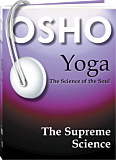
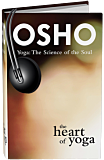

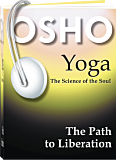

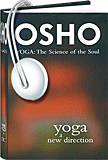
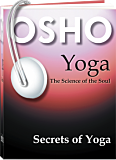


The information below is required for social login
Sign In or Create Account
Create New Account